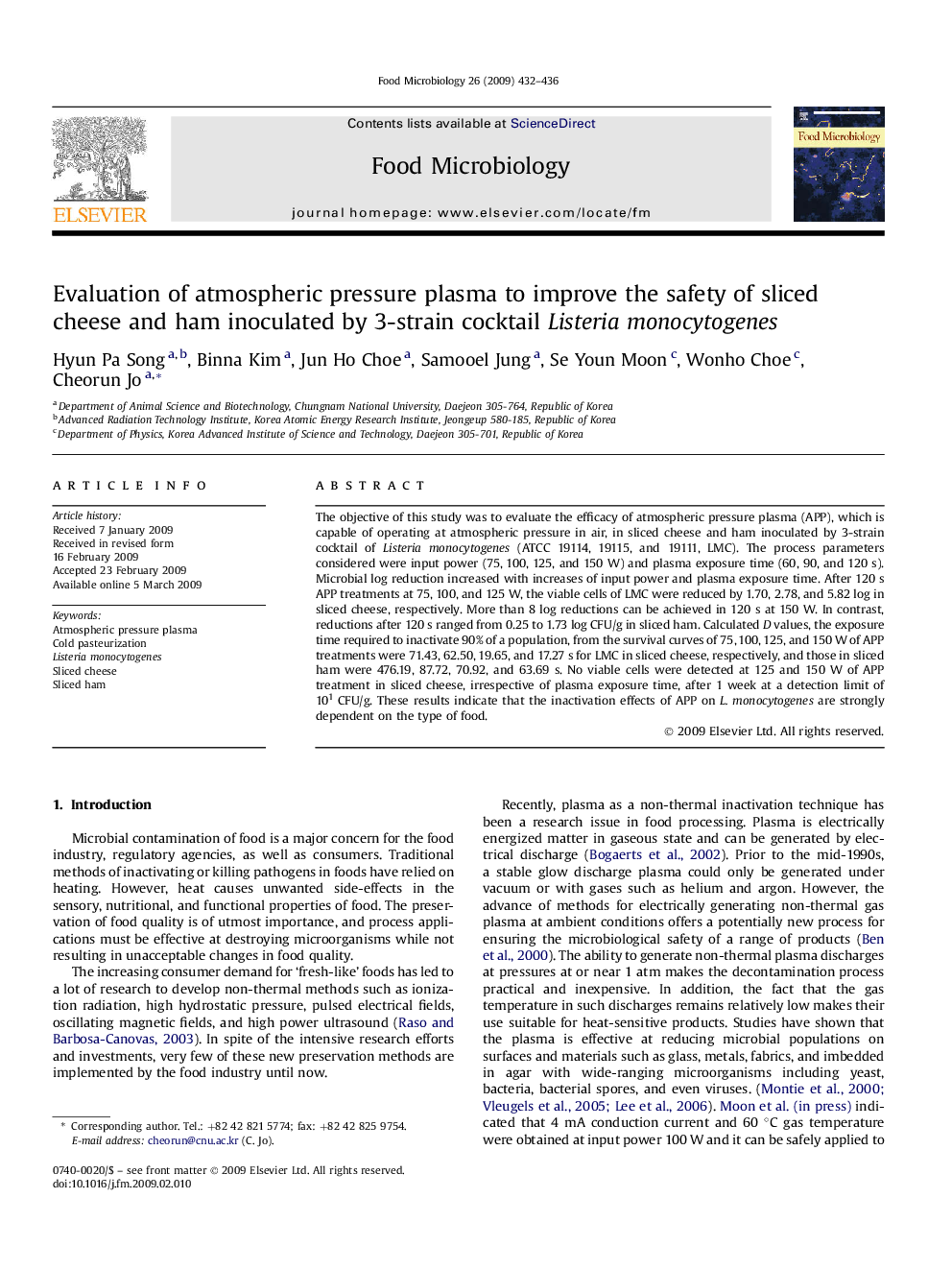| Article ID | Journal | Published Year | Pages | File Type |
|---|---|---|---|---|
| 4363667 | Food Microbiology | 2009 | 5 Pages |
Abstract
The objective of this study was to evaluate the efficacy of atmospheric pressure plasma (APP), which is capable of operating at atmospheric pressure in air, in sliced cheese and ham inoculated by 3-strain cocktail of Listeria monocytogenes (ATCC 19114, 19115, and 19111, LMC). The process parameters considered were input power (75, 100, 125, and 150 W) and plasma exposure time (60, 90, and 120 s). Microbial log reduction increased with increases of input power and plasma exposure time. After 120 s APP treatments at 75, 100, and 125 W, the viable cells of LMC were reduced by 1.70, 2.78, and 5.82 log in sliced cheese, respectively. More than 8 log reductions can be achieved in 120 s at 150 W. In contrast, reductions after 120 s ranged from 0.25 to 1.73 log CFU/g in sliced ham. Calculated D values, the exposure time required to inactivate 90% of a population, from the survival curves of 75, 100, 125, and 150 W of APP treatments were 71.43, 62.50, 19.65, and 17.27 s for LMC in sliced cheese, respectively, and those in sliced ham were 476.19, 87.72, 70.92, and 63.69 s. No viable cells were detected at 125 and 150 W of APP treatment in sliced cheese, irrespective of plasma exposure time, after 1 week at a detection limit of 101 CFU/g. These results indicate that the inactivation effects of APP on L. monocytogenes are strongly dependent on the type of food.
Keywords
Related Topics
Life Sciences
Agricultural and Biological Sciences
Food Science
Authors
Hyun Pa Song, Binna Kim, Jun Ho Choe, Samooel Jung, Se Youn Moon, Wonho Choe, Cheorun Jo,
